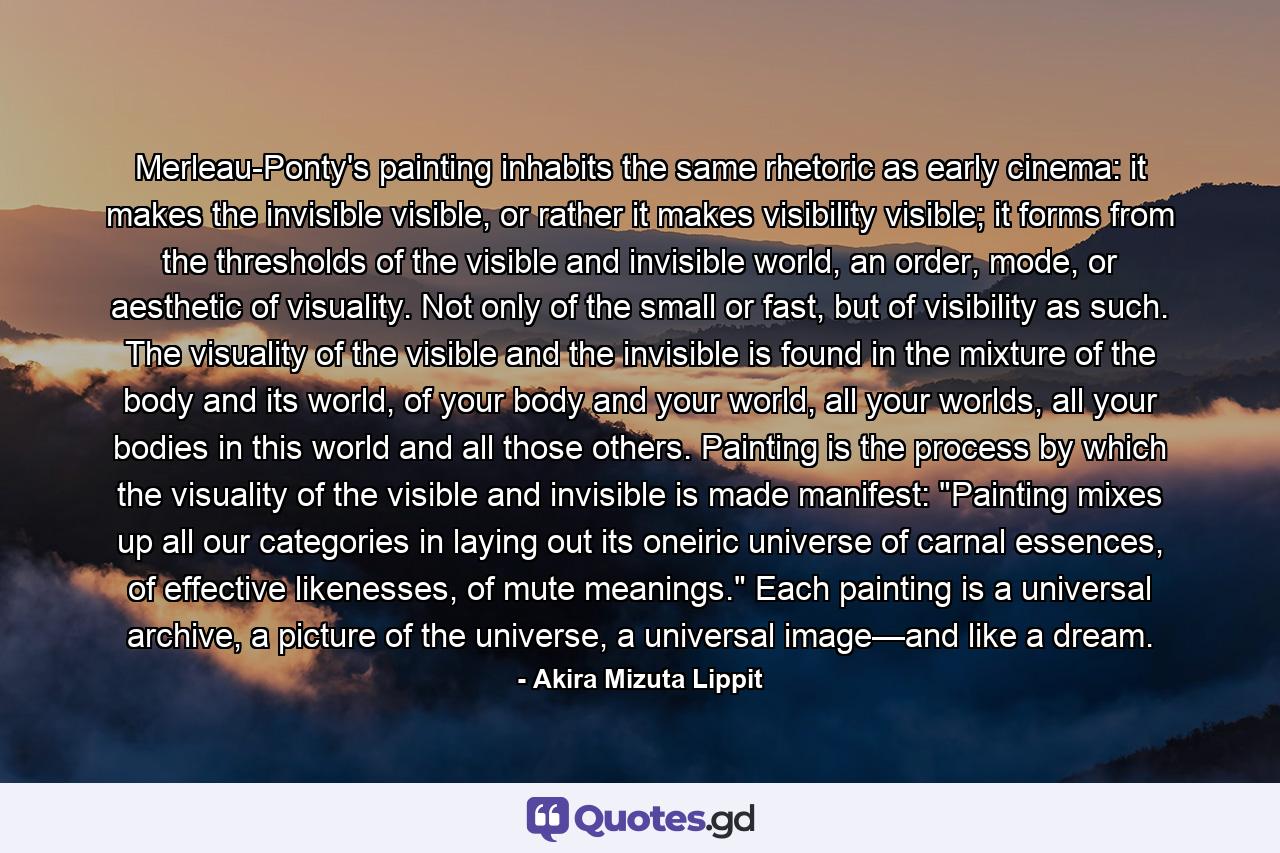Merleau-Ponty’s painting inhabits the same rhetoric as early cinema: it makes the invisible visible, or rather it makes visibility visible; it forms from the thresholds of the visible and invisible world, an order, mode, or aesthetic of visuality. Not only of the small or fast, but of visibility as such. The visuality of the visible and the invisible is found in the mixture of the body and its world, of your body and your world, all your worlds, all your bodies in this world and all those others. Painting is the process by which the visuality of the visible and invisible is made manifest: “Painting mixes up all our categories in laying out its oneiric universe of carnal essences, of effective likenesses, of mute meanings.” Each painting is a universal archive, a picture of the universe, a universal image—and like a dream.
